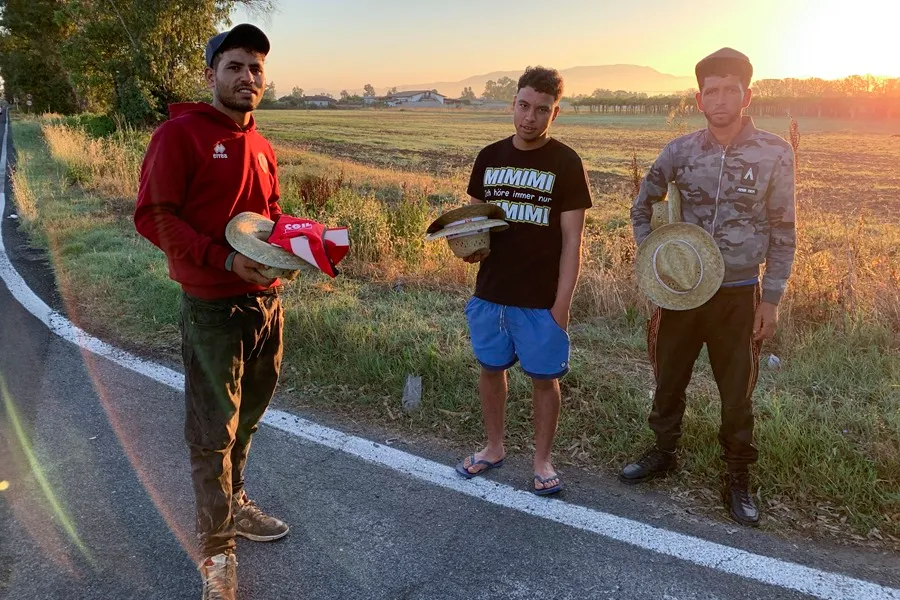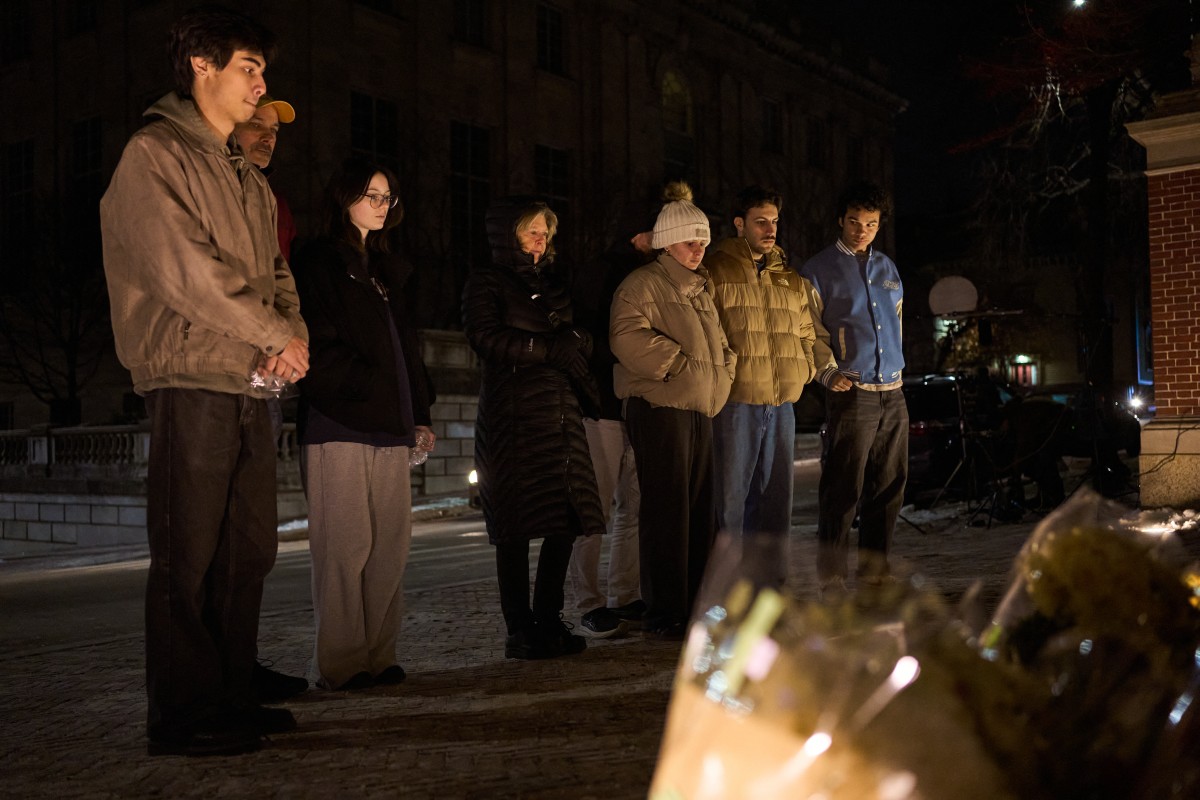International
Migrants, cheap labor to work in the fields in the south of Rome

Before dawn, Shoda, a 29-year-old Indian, goes out by bike to go to work in the countryside in Latina, an important agricultural province in the south of Rome and one of the most productive in Italy. It is one of the many migrants exploited as cheap labor in the area, the vast majority, according to the unions.
This young Indian from the Punjab region – like a large part of the migrants in Latina – travels every day the 20 kilometers between his rural neighborhood of the town of Aprilia and the green fields of Latina, where he collects seasonal fruit and vegetables since his arrival in Italy two years ago.
Shoda, one of the 30,000 members of the Indian community in the area, claims to be happy with his work, although he only charges about 6 euros an hour – below the about 10 that the agricultural agreement marks – but is outraged by the death last week of his compatriot Satnam Singh after a serious accident on a farm in the region.
After being run over by a machine that cut his arm, Singh was abandoned on the street next to his member amputated by his boss, who let him die from a hemorrhage that would have been contained if he had received the necessary medical attention.
“They treated him like an animal,” he denounces to EFE Shoda, who in recent days went out to protest a tragedy that has once again focused on the labor exploitation of migrants, very common in Latina, an area with about 30,000 agricultural workers, 70% of them foreigners and many irregular and without a contract.
Andrea Coinu, a member of the CGIL union, the largest in Italy, leaves these early morning days to talk to the migrants who leave at dawn to go to work.
In a van with a dozen more trade unionists, he walks through the fields and villages full of fruit trees and crops to inform them of their labor rights in the face of the “extended impunity” of agricultural owners and entrepreneurs that, he says, culminated in Singh’s tragic death last week.
Since that incident, in the area “there is a lot of tension and fear, both on the part of workers and entrepreneurs,” says Coinu, who distributes pamphlets and talks to Indian day laborers of the Sikh religion with the support of a translator shortly before they are picked up to go to the countryside.
Even in the early hours of the morning, other vans with more workers pass by. According to the CGIL, they go to work accompanied by foremen, one more sample of the ‘caporalato’, a system very widespread in Italian agriculture – it would affect 40% of employees in the center and south of the country – and that has been prevailing in Latina despite being vetoed by law for years.
It is based on employing cheap labor through foremen – part of them from the migrant community – who choose the workers and keep part of the money that the employer offers as a daily wage.
Faced with the controversy over the death of the Indian day laborer, a new victim of the ‘caporalato’, the far-right government of Giorgia Meloni insisted in recent days on its rejection of that system, while unions, part of the migrant community and the political opposition accused the Executive of inaction.
“There are people who only charge four euros an hour despite the strenuous work in the countryside,” says Coinu, who hopes that, after Singh’s tragedy, “the authorities will really invest time in changing things” in a sector “very based on exploitation.”
According to the complaint, the bosses of Latina profit from all this, an area of fascist tradition populated by settlers from northern Italy in a project launched by Benito Mussolini in the 1930s.
The area has many water resources, which makes Latina one of the large areas of kiwi production in Europe, as well as vineyards and crops of melons, tomatoes or cucumbers.
“It’s a tiring job, but it needs to be done to support the family,” another Indian migrant of about 50 years old who goes by bike to work and complains about the bad conditions.
As he explains, he changes crops and pattern according to the seasonal harvest, although unlike many others who must work clandestinely, he has a work permit and a stable situation.
That’s what three young Tunisians are looking for, hoping to improve their future in Italy, while the sunlight rises and they wait on the corner of a rural road for a vehicle to pick them up to go to work on a foreign land.
International
Rubio rules out 2028 presidential bid if Vance runs

U.S. Secretary of State Marco Rubio said he would not seek the presidency in 2028 if current Vice President JD Vancedecides to run as the Republican nominee to succeed President Donald Trump.
“If JD Vance runs for president, he will be our candidate, and I will be one of the first people to support him,” Rubio said in an interview with Vanity Fair, in which he appeared alongside other senior members of the presidential cabinet.
Rubio, 54, and Vance, 41, are widely viewed as two of the leading Republican figures who could headline the party’s ticket in the 2028 election. Under the U.S. Constitution, Trump is barred from seeking another term after completing two presidential mandates.
In a lighthearted moment during the interview, Vance jokingly offered photographers $1,000 if they managed to make him look better than Rubio in the photos. Both leaders have received public backing from Trump, who last October floated the idea of a joint ticket featuring Rubio and Vance, without clarifying who would lead it.
“I think that if they ever teamed up, they would be unstoppable. I don’t think anyone would run against us,” Trump said at the time.
White House Chief of Staff Susie Wiles, who also took part in the interview, confirmed that Trump does not intend to violate the 22nd Amendment, which prohibits a third presidential term, though she acknowledged that the president is “having fun” with speculation about a possible return to office.
Rubio, the son of Cuban immigrants, served as a Republican senator from 2010 to 2025. He sought the party’s presidential nomination in 2016 but was defeated by Trump after a bruising primary contest. His name was floated as a potential vice presidential pick in 2024, but Vance ultimately secured the spot. After taking office, Trump appointed Rubio as secretary of state, making him the first Latino to hold the position.
International
Authorities search for armed and dangerous suspect in fatal Brown University attack

According to the statement, investigators are “seeking the public’s help to identify and speak with an individual” who was seen “near” the suspect at the time of the attack.
The Providence Police Department in Rhode Island released three photos of the person of interest, whose face has been blurred. In the images, the individual is wearing navy blue clothing, what appears to be a green hood, and carrying a light-colored backpack.
Earlier, authorities had released several photos and videos of a suspect described as “approximately 5 feet 8 inches tall, with a stocky build,” dressed in dark clothing, with their face covered by a surgical mask and wearing a beanie. The suspect’s identity remains unknown.
Authorities are offering a $50,000 reward for any information leading to the identification, arrest, and conviction of the person responsible for the killings, who is considered armed and dangerous.
The gunman opened fire on Saturday at Brown University’s engineering and physics building, where exams were being held, killing students Ella Cook and Mukhammad Aziz Umurzokov. The names of the nine people injured have not been released.
International
Police investigate deaths of Rob Reiner and wife as apparent homicide

The Los Angeles Police Department (LAPD) is investigating the deaths of Hollywood actor and filmmaker Rob Reinerand his wife as an “apparent homicide,” amid a wave of tributes to the director of classics such as When Harry Met Sally.
According to U.S. media reports on Sunday, Rob Reiner and Michele Singer Reiner were found dead at their Los Angeles mansion with what appeared to be stab wounds.
Several political figures shared messages of condolence following the reported deaths of the director of A Few Good Menand his wife.
While the LAPD did not officially confirm the identities of the victims, it stated that homicide detectives were dispatched to the Reiner residence.
“At this time, no additional details are available and the investigation into an apparent homicide is ongoing,” the Los Angeles Police Department said in a statement posted on social media.
LAPD Deputy Chief Alan Hamilton told reporters that no arrests have been made and that no individuals are currently being questioned as suspects.
“I’m not going to confirm whether anyone is being questioned at this moment or not. We are going to try to speak with as many family members as we can,” Hamilton said.
CNN reported that a family spokesperson confirmed the deaths of Reiner and his wife.
California Governor Gavin Newsom, former U.S. President Barack Obama, and former Vice President Kamala Harrisissued statements expressing their condolences.
-

 Central America3 days ago
Central America3 days agoPanama seizes over three tons of drugs hidden in Caribbean port container
-

 International3 days ago
International3 days agoPolice investigate deaths of Rob Reiner and wife as apparent homicide
-

 International5 days ago
International5 days agoSeveral people shot in attack on Brown University campus
-

 Central America3 days ago
Central America3 days agoOAS urges swift recount in Honduras as election results remain uncertain
-

 Central America2 days ago
Central America2 days agoBukele says AI partnership with xAI will transform public education in El Salvador
-

 Central America2 days ago
Central America2 days agoEl Salvador ranks among top countries in the Americas in fight against organized crime
-

 International4 days ago
International4 days agoU.S. and Mexico Reach Deal to Address Water Deficit Under 1944 Treaty
-

 International15 hours ago
International15 hours agoRubio rules out 2028 presidential bid if Vance runs
-

 Central America15 hours ago
Central America15 hours agoArrests and clashes in Tegucigalpa as vote count continues after Honduras election
-

 International15 hours ago
International15 hours agoAuthorities search for armed and dangerous suspect in fatal Brown University attack


























